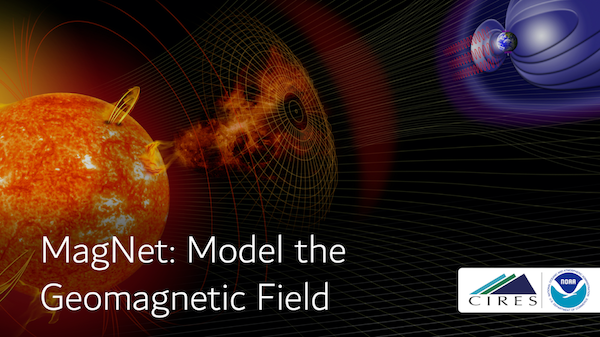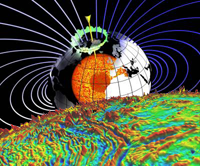|
||||||||
|
MagNet: Model the Geomagnetic Field
The efficient transfer of energy from
solar wind into the Earth’s magnetic field causes geomagnetic storms. The resulting variations in the
magnetic field increase errors in magnetic navigation. The disturbance-storm-time index, or Dst, is a
measure of the severity of the geomagnetic storm. As a key specification of the magnetospheric
dynamics, the Dst index is used to drive geomagnetic disturbance models such as the High Definition Geomagnetic Model Real-Time (HDGM-RT) . Additionally, magnetic
surveyors, government agencies, academic institutions, satellite operators, and power grid
operators use the Dst index to analyze the strength and duration of geomagnetic storms. Over the
past three decades, several models were proposed for solar wind forecasting of Dst, including
empirical, physics-based, and machine learning approaches. While the ML models generally perform
better than models based on the other approaches, there is still room to improve, especially when
predicting extreme events. More importantly, we seek solutions that work on the raw, real-time data streams and are agnostic to sensor malfunctions and noise.
NOAA is asking the crowd to develop models for forecasting Dst that
push the boundary of predictive performance, under operationally viable constraints, using the
real-time solar-wind data feeds from NOAA's
DSCOVR and NASA's ACE satellites.
Chapter 1: magnet_lstm_tutorial_chapter1_model_devel.ipynbAwards: $30,000 in total prizes Open Date: December 15, 2020 Close Date: February 12, 2021 For more information, visit: https://www.drivendata.org/competitions/73/noaa-magnetic-forecasting/ Description: Chapter 1 "Develop the LSTM Model" of the two notebook series, provides the benchmark machine learning modeling experience for a key space weather storm indicator, the disturbance-storm-time (Dst) index, for the 2020 NOAA competition, "MagNet: Model the Geomagnetic Field". Chapter 2: magnet_lstm_tutorial_chapter2_xai.ipynb Description: Chapter 2 "Explainable AI (XAI)", of the two notebook series, focuses on evaluating the benchmark model developed in Chapter 1 "Develop the LSTM Model" for predicting the disturbance-storm-time (Dst) index space weather storm indicator. |

